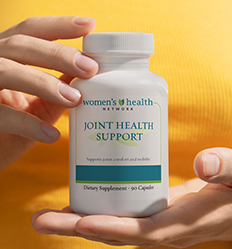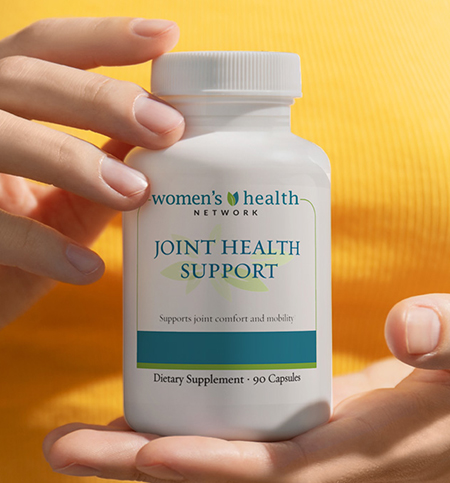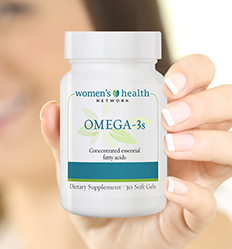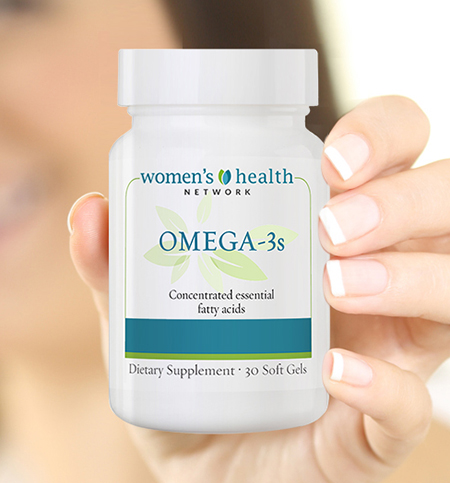Authored by Dr. Pier Boutin, MD
When I diagnose patients under the age of 50 with arthritis, it’s usually an unwelcome surprise, often because arthritis is only supposed to happen to “old people.” After explaining that pain in their knees, shoulders or hips is related to arthritis, the response I often hear in my office is, “But I’m too young for this!”
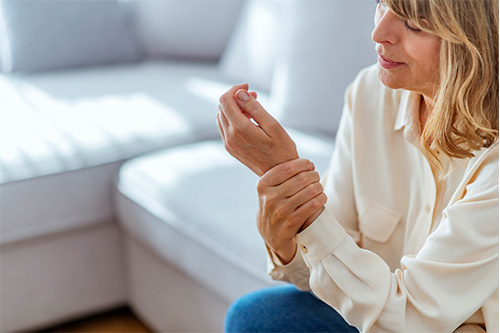
The reality is that in the United States, nearly two-thirds of arthritis diagnoses are in people under 65 — and almost 1 in 3 people ages 18 to 64 have some form of arthritis.
If you suspect or have been officially diagnosed with arthritis, it’s important to first identify and understand what kind of arthritis you have, as it makes a difference in what you can do to find relief from pain and related symptoms that may be limiting your mobility and flexibility.
The good news: There’s a lot you can do.
Not all arthritis is the same
Arthritis simply means “inflammation in the joints,” but beyond that simple fact lies a fair bit of complexity. Most of us, hearing “arthritis,” will immediately assume we mean osteoarthritis.
There’s good reason for that assumption. Osteoarthritis — which is caused by wear-and-tear of the cartilage that cushions bones from pressing against one another — is very common. When cartilage deteriorates to the point that the bones are rubbing against each other as we move, pain and inflammation are the result. It can begin with an injury during sports or exercise, with knees being particularly susceptible; almost 45% of us will have arthritis in the knees at some point in our lives.
Even if you’ve never injured yourself in sports, simply living your life involves some wear and tear on joints.
But osteoarthritis is far from the only type of arthritis out there, and there’s a big difference in the causes of different types of arthritis: some forms of inflammatory arthritis (such as rheumatoid and psoriatic arthritis, Sjogren’s disease, seronegative inflammatory joint pain and lupus) are related to autoimmune attacks on the tissue within the joints, while others, such as gout, relate to how your body processes certain foods.
And just as the causes are different, so are the joints most affected: Where osteoarthritis tends to hit knees, ankles, and (depending on your lifestyle) spine, hips and shoulders, rheumatoid arthritis often manifests with painful swelling in the joints of the hands and wrists, as well as the knees. Gout almost always starts in the toes, particularly the big toe.
Men under 65 are much more likely to have osteoarthritis than women, whereas women are twice as likely to develop inflammatory joint pain and swelling.
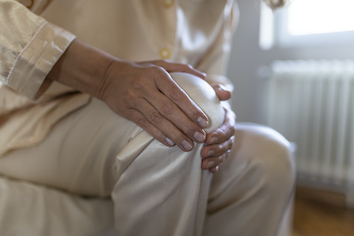
Your plan for managing arthritis
So, let’s say you’re in your early 40s and your knees have been bothering you — maybe for a while, and now it’s getting to where you hate to even get out of bed because you know it’s going to hurt. You may be thinking, “Gosh, I probably should’ve eased up in the running when I was younger,” attributing your pain to sports-related osteoarthritis.
However, I would urge you to make an appointment with your healthcare provider to explore this nagging knee pain. You might be right: It could just be residual damage from years of activity, but it could also be the initial onset of one of several autoimmune disorders that affect women more than men, such as rheumatoid arthritis. If your joints are under autoimmune attack, you need to investigate and get testing to uncover the source of the problem — and the earlier, the better, as there are steps you can take to slow the deterioration of your joints.
Even if it turns out that you do have osteoarthritis, there’s plenty you can do to ensure a long and active life despite the diagnosis. When you’re in your 40s, the damage that has been done over time is starting to show — but it need not be lasting or progressive. Here are some strategies to limit your pain and reduce the risk of it worsening:
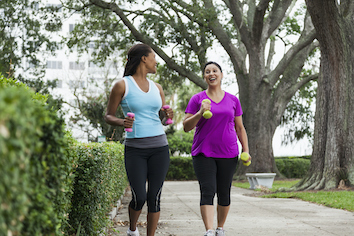
Keep (or get) moving
I know it’s counterintuitive, but if you’re an active person, the last thing you should do when dealing with osteoarthritis is sit down and try to wait out the pain. It’s been shown in countless studies that the people who maintain the greatest mobility and flexibility are the ones who don’t “take it easy” when they have joint pain. That’s because the muscles adjacent to the joint help protect them during motion and absorb the shock during weight bearing — so if the muscles aren’t kept strong, the strain through the joint increases exponentially and causes pain and destruction. When it comes to arthritis, “use it or lose it” should be move it or lose it.
That doesn’t mean you should sign up for the next 5K you see advertised. Your joints lack cushioning, so pounding them against pavement (or even grass and dirt) isn’t going to make things better. It means, instead, that you should develop an activity regimen that spares your joints the impact while allowing you to keep those muscles moving. Low-impact exercise like cycling, swimming, walking, yoga, tai chi and similar practices can help you maintain your flexibility and strength without putting too much extra stress on your joints.
And stretching well is crucial, as you’re less likely to injure yourself and make matters worse if you’re well warmed up before exercise. In fact, a daily routine of stretching is usually beneficial. Pilates, for example, has been found in one meta-analysis to be helpful in a wide range of painful musculoskeletal conditions, and knee arthritis is one of them.
If you’re generally sedentary or among the “occasionally active,” let this be incentive to get more active — albeit gently. Consider starting with strength training (under supervision and in consultation with your healthcare provider). In many people, joint pain can be partly or fully alleviated by strengthening muscle groups near the affected joints. Knee pain, in particular, responds pretty well to strength training of the thigh (quadriceps) muscles.
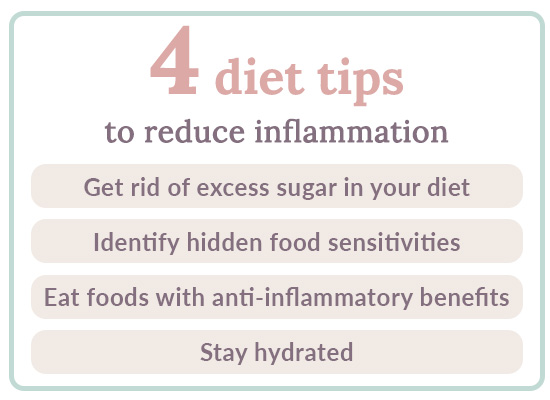
Use your diet to reduce inflammation
Whether it’s osteoarthritis or inflammatory arthritis (or joint pain), the problem in your joints is inflammation — that is, your immune system is acting up, either in response to damage in the tissue (osteoarthritis) or out of an unfortunate overreaction to your own cells (inflammatory arthritis). Anything you can do to limit the inflammatory response by the immune system will generally help with arthritis pain, and for some of us, that means taking stock of the foods we eat.
As a priority, get rid of excess sugar in your diet. Foods that contain processed sugars and carbs release pro-inflammatory substances in the body. Cookies, bread, pasta, sodas, candy and some foods you might not think of, like common brands of salad dressing and spaghetti sauce, all contain added sugar. Swap these foods for healthier choices and read labels carefully. Sugars in wine, beer and wheat flour/grain-based foods also contribute to inflammation, so consider cutting down or eliminating these for the sake of your achy joints. Excess sugar and alcohol consumption also contributes to weight gain, hormonal disruptions and breast cancer risk — so you really do yourself a favor when you ditch these foods.
Hidden food sensitivities can trigger inflammation. If you are sensitive to a specific food category — dairy is a big one for some people, gluten for others — you may find that avoiding those foods brings a measure of relief from inflammation. One patient realized that she woke in the night with terrible pain in her hips every time she ate dairy — but when she switched to a dairy substitute (almond milk) for a few days, the pain went away.
Eat foods that offer anti-inflammatory benefits. Nuts, like my patient’s almond milk, contain anti-inflammatory omega-3 fatty acids. Other anti-inflammatory compounds found in plant foods include flavonoids (bell peppers, citrus fruits), antioxidant curcuminoids (turmeric) and taurine (fish and shellfish, seaweed, eggs). Making a point of incorporating these foods into your diet could help reduce painful joint inflammation and promote better health in general.
Stay hydrated. One of the issues in both osteoarthritis and rheumatoid arthritis is lack of lubrication within the joint. When an individual is chronically dehydrated — and a surprising number of us are — the synovial fluid within the joints becomes “sticky” and doesn’t allow for smooth motion of the joint. Water, of course, is one of the best solutions for this problem, but another good option is tea — black, green or white tea leaves all produce a polyphenol known as epigallocatechin 3-gallate (EGCG) that has 100 times the antioxidant action of vitamins C and E, and has been found to have anti-inflammatory effects in rheumatoid arthritis.
Really, what dealing with your arthritis pain is all about is taking good care of yourself as you age. Exercising, following an anti-inflammatory diet and paying attention to smaller details, like hydration, are all good steps to keep you moving and feeling good for years to come.
 | What’s causing your joint pain? Find out if you should be worried about your symptoms. |
Bjørklund G, Aaseth J, Dosa MD, et al. Does diet play a role in reducing nociception related to inflammation and chronic pain? Nutrition. 2019 Oct;66:153-165. doi: 10.1016/j.nut.2019.04.007. Epub 2019 Apr 26.
Brosseau L, Taki J, Desjardins B, et al. The Ottawa panel clinical practice guidelines for the management of knee osteoarthritis. Part two: strengthening exercise programs. Clin Rehabil. 2017 May;31(5):596-611. doi: 10.1177/0269215517691084. Epub 2017 Feb 1.
Byrnes K, Wu PJ, Whillier S. Is Pilates an effective rehabilitation tool? A systematic review. J Bodyw Mov Ther. 2018 Jan;22(1):192-202. doi: 10.1016/j.jbmt.2017.04.008. Epub 2017 Apr 26.
Fransen M, McConnell S, Hernandez-Molina G, Reichenbach S. Exercise for osteoarthritis of the hip. Cochrane Database Syst Rev. 2014 Apr 22;(4):CD007912. doi: 10.1002/14651858.CD007912.pub2.
Hui AY, McCarty WJ, Masuda K, et al. A Systems Biology Approach to Synovial Joint Lubrication in Health, Injury, and Disease. Wiley Interdiscip Rev Syst Biol Med. 2012 Jan-Feb; 4(1): 15–37.
Mazloum V, Rabiei P, Rahnama N, Sabzehparvar E. The comparison of the effectiveness of conventional therapeutic exercises and Pilates on pain and function in patients with knee osteoarthritis. Complement Ther Clin Pract. 2018 May;31:343-348. doi: 10.1016/j.ctcp.2017.10.008. Epub 2017 Oct 22.
Muraki S, Akune T, Teraguchi M, et al. Quadriceps muscle strength, radiographic knee osteoarthritis and knee pain: the ROAD study. BMC Musculoskelet Disord. 2015 Oct 16;16:305. doi: 10.1186/s12891-015-0737-5.
Wellsandt E1, Golightly Y. Exercise in the management of knee and hip osteoarthritis. Curr Opin Rheumatol. 2018 Mar;30(2):151-159. doi: 10.1097/BOR.0000000000000478
Riegsecker S, Wiczynski D, Kaplan MJ, Ahmed S. Potential benefits of green tea polyphenol EGCG in the prevention and treatment of vascular inflammation in rheumatoid arthritis. Life Sci. 2013 Sep 3;93(8):307-12. doi: 10.1016/j.lfs.2013.07.006. Epub 2013 Jul 19.







